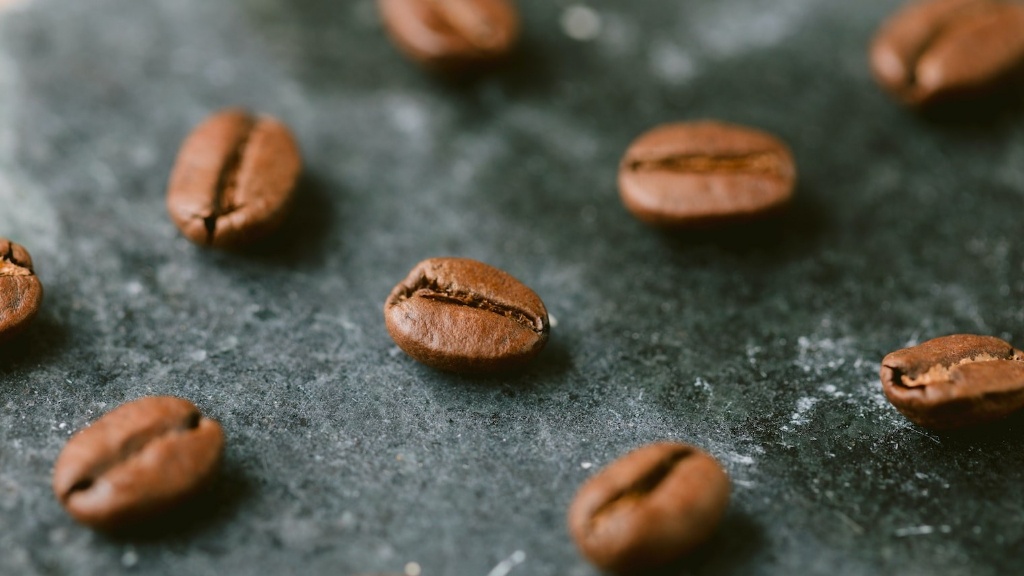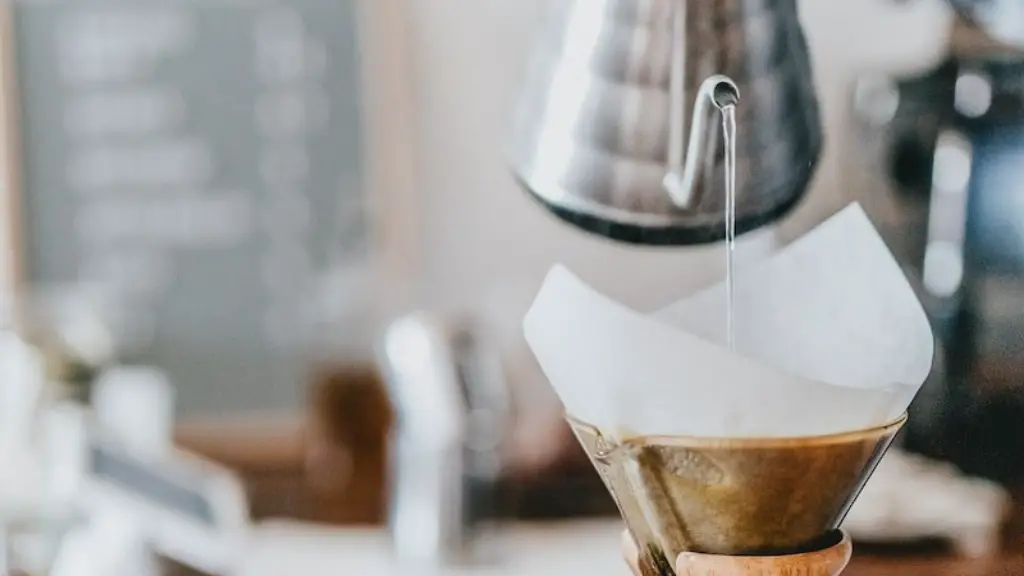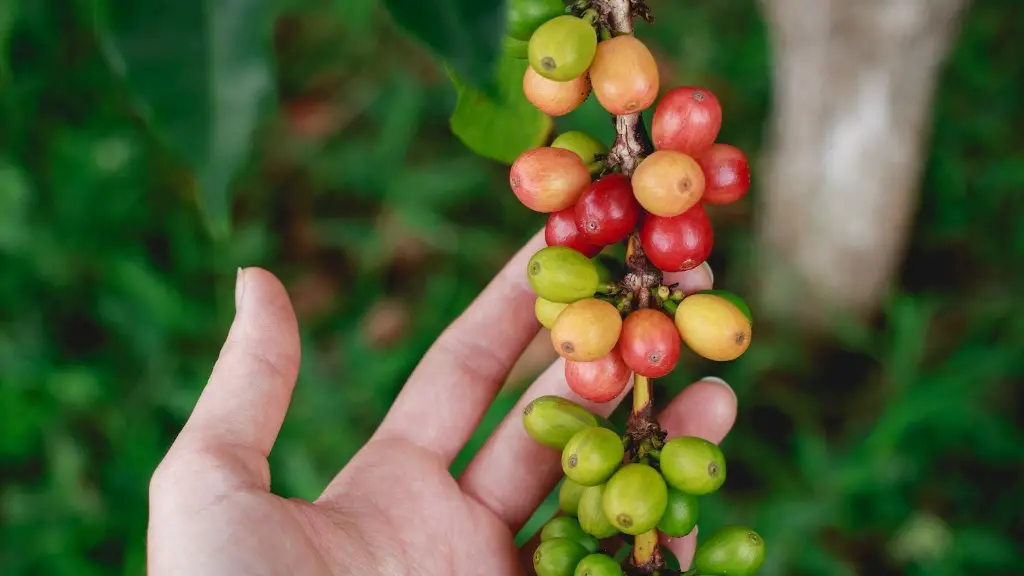Coffee beans absorb and lose moisture content based on the relative humidity of the air around them. The rate at which they do this changes depending on the bean’s varietal and stage of roast, but all coffee will go through these changes to some extent. Measuring the moisture content of coffee beans is important for roastmasters in order to produce a consistent product, and there are a few different ways to do it.
To measure moisture content in coffee beans, weigh the beans, then place them in an oven set to 105 degrees Celsius for 2 hours. Weigh the beans again, and calculate the percentage of weight loss. This is the moisture content.
What is the suitable method to determine the moisture content in roasted coffee?
The standard method for testing the moisture content of a sample is to place it in an oven at 220°F for 24 hours. The weight of the sample is then measured, and the percentage of moisture is calculated.
The loss on drying method is the most common method used to determine the moisture content of a sample. In this method, a wet sample is weighed on a balance, placed in an oven, and heated until the end of the drying period, i.e., until the sample reaches equilibrium. The weight loss is the moisture content of the sample.
The Karl Fischer titration is another common method used to determine moisture content. In this method, a known amount of water is added to a sample and the mixture is titrated with a standard Karl Fischer reagent. The amount of water required to titrate the sample is the moisture content of the sample.
What is the moisture content of roasted coffee beans
Once the coffee bean is roasted, there is usually less than 2% moisture content in the bean. The coffee bean can lose about 20% in weight during the roasting process. There are a few tools out there that can assist in measuring moisture in coffee roasting.
A coffee humidity meter is a portable moisture testing equipment that can be operated anywhere and at any time. It has a back lit, multilingual display that provides accurate readings. It can work in either basic mode or advanced precision calibration mode to match the local elevator.
Which direct method is used to determine the moisture content of product?
The direct methods for measuring the loss of weight (LOD) are based on the thermo gravimetric principle. This principle states that the total weight loss of a sample on drying is proportional to the moisture content. The direct methods use this relationship to calculate the moisture content.
Drying ovens are the most common type of direct method. They work by circulating hot air around the sample. The hot air causes the water in the sample to evaporate. The weight of the sample is then measured. The weight loss is used to calculate the moisture content.
The direct methods are simple and quick. However, they can be inaccurate if the sample is not completely dry.
The thermogravimetric method of moisture analysis is a primary method of water content determination. This method uses halogen heating as the source of thermal radiation. The halogen heating source provides a broad spectrum of infrared radiation that is absorbed by water molecules. The absorbed energy causes the water molecules to vibrate, and this vibration is converted into heat. The heat is then used to determine the water content of the sample. The thermogravimetric method is a reliable and accurate method of moisture analysis.
What equipment is used to determine moisture content?
NIR spectroscopy is a near-infrared spectroscopy that uses the absorption of near-infrared radiation to measure the moisture content of a material. It is a nondestructive testing method that can be used to measure the moisture content of a wide range of granular materials, such as grains, coal, and minerals.
Moisture content can be easily measured by using a moisture analyser. The first step is to weigh the sample before drying. Then, set the appropriate parameters (temperature and time) and dry the sample. Finally, weigh the sample after drying and compare it to the initial weight to calculate the loss on drying.
How can you tell the level of roasted coffee beans
Dark roasted coffee beans have a bold and smoky flavor because of the oil that surfaces on the bean. Light and medium roasted coffee beans have little to no oil on the surface of the bean. As a coffee bean roast, the body gets thicker and heavier up until the “second crack”. After the second crack, coffee beans start to thin and taste more like charcoal.
As you roast a coffee, you break down the cell structure of the bean, releasing CO2. When the CO2 comes into contact with oxygen, it creates a chemical reaction that leaves behind the oily or wet appearance that we can sometimes see on the bean.
Should coffee beans look dry or oily?
It’s pretty easy to tell if your coffee beans are fresh or not. If they’re dry, it’s a good sign that they’re fresh and were craft roasted. However, if they’re oily, it’s an indicator that your beans are either pretty old or were over-roasted.
This method is used to determine the moisture content of hay by oven drying. A sample of hay is weighed, then dried in an oven. Once the hay is dry, it is weighed again to determine the “dry weight.” The dry weight is then divided by the wet weight to determine the moisture content as a percentage.
What is an acceptable moisture readings
Mold, mildew, fungi, and bacteria can thrive in environments with high humidity levels. This can lead to health problems for people who are exposed to these contaminants. indoor air quality can be degraded by these contaminants, and it is important to maintain an acceptable level of indoor humidity to prevent their growth.
The refractometer is a quality control tool that can be used to measure the TDS and extraction yield of coffee. This is useful information to have when trying to replicate a great cup of coffee.
Which is the most precious method of moisture analysis?
The Karl Fischer method is the most accurate and specific method for determining the water content of a substance. It is based upon the reaction of iodine with sample water, in the presence of alcohol solvent, sulfur dioxide, and a base.
There are several ways to measure moisture, but the most common are electrical, microwave, nuclear, and near-infrared (NIR) absorbance. Other (less frequently used) methods include hydrometry, refractometry, freezing point, and gas chromatography/mass spectrometry (GCMS).
What is the most popular method of determination of field moisture content
Field capacity is the amount of water a soil can hold against gravity after excess water has drained from the soil and all air spaces are filled with water.
Permanent wilting point is the minimum moisture content at which a plant will wilt and not recover.
Moisture content is the weight of water divided by the weight of the soil.
The pressure membrane apparatus consists of a metal ring with a collar, a perforated metal plate, a membrane, a rubber ring and a screw clamp. The ring is placed over the sample in the metal ring with the collar up. The perforated plate is placed over the metal ring. The membrane is placed over the perforated plate. The rubber ring is placed over the membrane. The screw clamp is tightened to secure the apparatus.
The pressure plate apparatus consists of a metal ring, a perforated metal plate, a rubber ring and a screw clamp. The ring is placed over the sample in the metal ring. The perforated plate is placed over the metal ring. The rubber ring is placed over the perforated plate. The screw clamp is tightened to secure the apparatus.
The oven dry method is the most accurate and simplest method for water content determination. This method involves drying a sample of the material in an oven at a constant temperature until the sample reaches a constant weight. The water content of the material is then determined by subtracting the dry weight of the sample from the wet weight of the sample.
Warp Up
The most accurate way to measure the moisture content of coffee beans is with a moisture meter. Place the tip of the moisture meter into the center of the bean and wait for the reading. The moisture content of coffee beans is typically between 10-12%.
There are a few ways to measure moisture content in coffee beans. The most common way is to use a moisture meter. Moisture meters come in two different forms, analog and digital. To use either type, you simply insert the meter’s sensor into the coffee bean. The digital moisture meter will give you an instant readout of the moisture content, while the analog moisture meter will need to be calibrated to a known moisture standard.





